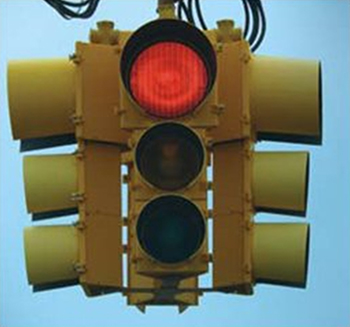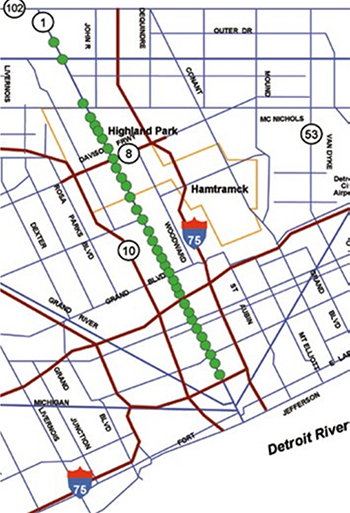Original publication: Improving Safety by Providing All-Red Clearance Intervals and Larger Signal Lenses (FHWA-SA-09-014) (PDF, 563kB)
Red-light running is estimated to cause more 170,000 injuries and approximately 900 deaths per year (FHWA, Red-Light Running Web Site). Some of these crashes occur because of driver speeding, distracted driving, or inability or failure to see the traffic control device in time to comply. The cities of Detroit and Highland Park, Michigan, were concerned about the high number of crashes, particularly angle crashes, at some of their signalized urban intersections.
The cities of Detroit and Highland Park implemented all-red clearance intervals and larger signal lenses at 33 intersections experiencing a high incidence of crashes (particularly angle crashes), many with injuries.


Key Accomplishments
As the Michigan experience demonstrates, low-cost improvements can effectively improve safety and reduce traffic crashes and their resulting injuries.
Results
The combinations of enhanced countermeasures installed at these Michigan signalized intersections cumulatively reduced total crashes by approximately 33.3 percent and injury crashes by an average of 45.5 percent per year. Angle crashes were reduced by a significant 75.7 percent per year at the treated intersections.
Contact
Tapan Datta
WSU-Transportation Research Group, MI
tdatta@eng.wayne.edu
